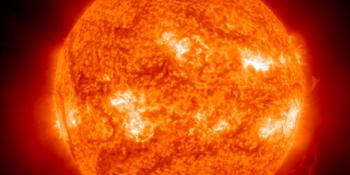Prohlížíte si archiv pondělí 16. března 2015
Vyberte požadovanou položku archivu
C9 solar flare, sunspot region 2297, CME arrival?
A long duration C9 solar flare took place yesterday morning near sunspot region 2297 and launched a partial halo coronal mass ejection into space. While it is not a full halo coronal mass ejection, the coronal mass ejection was nonetheless very wide and caused an increase in the protons and electrons at Earth meaning that this coronal mass ejection will likely arrive at Earth. Based on the ejecta speed, the coronal mass ejection could arrive during the UTC evening hours of 17 March and cause a minor G1 geomagnetic storm.
Poslední zprávy
Nejnovější zprávy na fóru
Podpora SpaceWeatherLive.com!
Mnoho lidí přichází do SpaceWeatherLive, aby sledovali aktivitu Slunce nebo pokud je vidět polární záři, ale s větším provozem přicházejí i vyšší náklady na server. Zvažte dar, pokud vás baví SpaceWeatherLive, abychom mohli udržovat web online!

Fakta o počasí ve vesmíru
| Poslední X-záblesk | 04. 01. 2025 | X1.85 |
| Poslední M-záblesk | 09. 01. 2025 | M1.1 |
| Poslední geomagnetická bouře | 04. 01. 2025 | Kp5 (G1) |
| Dny bez skvrn | |
|---|---|
| Poslední den bez skvrn | 08. 06. 2022 |
| Průměrný měsíční počet slunečních skvrn | |
|---|---|
| prosince 2024 | 154.5 +2 |
| ledna 2025 | 140.8 -13.8 |
| Posledních 30 dnů | 151.7 +34.3 |


